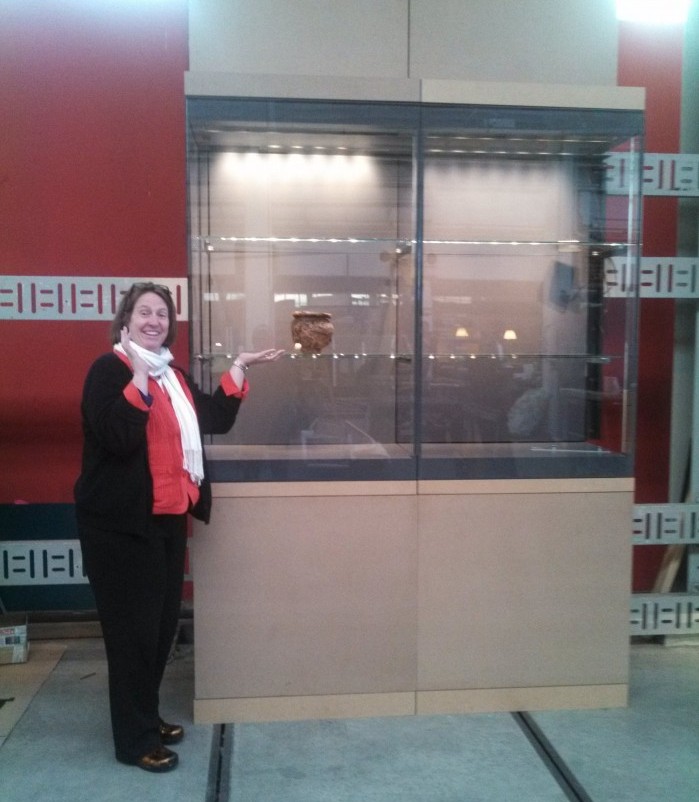
By Meg Brown
When you step inside the renovated Rubenstein Library, one of the first things you will notice is that we have completely redesigned and expanded our library exhibit spaces.
Exhibits play an important role in the educational and outreach mission of the Libraries. They also showcase the breadth and diversity of what a great library system like Duke’s has to offer.
Of course, effective exhibits are easy to enjoy and appreciate, but they are anything but easy to produce. A lot of behind-the-scenes work goes into every exhibit you see at the library.
One of the most exciting aspects of that work, for me, has been the design and production of our new exhibit cases. After years of poring over technical drawings with architects, conservators, designers, and builders, our new cases are finally being installed and will be ready to house the Libraries’ treasures when we open to the public at the end of August.

To produce the new exhibit cases in the Biddle Rare Book Room, we decided to work with Goppion, a small Italian company that has perfected the art of exhibit case design. (They designed the cases for the Mona Lisa at the Louvre and the Crown Jewels in the Tower of London, among other high-profile projects.)
When your goal is to display irreplaceable historical documents and artifacts, but also keep them safe and secure, no detail is too small to consider. What kind of glass should you use? What kind of cloth? What kind of hinges? Which way should the exhibit case doors open? Over the last two years, we’ve held countless meetings to discuss environmental controls, shelf heights, conservation testing, light levels and angles, and, not least important, color. We also visited other libraries and museums across the United States to learn from their expertise.
In March of 2014, some of us traveled to Goppion’s headquarters in Milan, Italy, to look at prototypes. The trip was so inspiring we changed some design ideas. Eventually, everyone got down to the “real” work of turning our plans into reality.

Our architects with the firm Shepley Bulfinch figured out how to blend metal and glass into the wood-lined gentlemen’s library design scheme of the Biddle Rare Book Room. Carpenters from Stephenson Millwork constructed encasements to wrap around the gasketed structures. And Goppion’s case-makers began installing large sheets of glass, figuring out how to make doors open sideways, and designing enclosures that will keep our library materials safe in every way.
And me? I began to work with teams of curators to design exhibits for spaces that were still under construction. I made drawings and physical mock-ups and took measurements of every square inch in an attempt to design for a space we could only see in our mind’s eye.

Things are finally coming together now. The glass and metal structures of the cases are in place. The carpenters are wrapping the room with beautiful wood paneling and millwork. The curators are writing and revising their labels. Any day now we will walk through the door and see the fruit of our labor. I hope you will come visit in August, be inspired by the renovations, and bask in the beauty of great craftsmanship and hard work!
Meg Brown is the E. Rhodes and Leona B. Carpenter Foundation Exhibits Coordinator.

